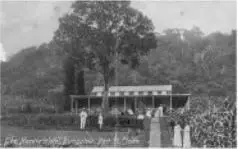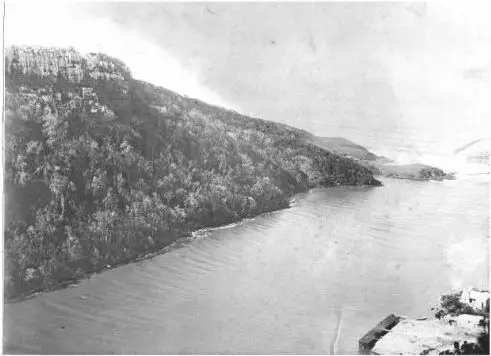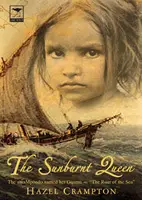There are many fascinating stories to tell about the early days in Port St Johns. Below is an extract from letters sent home by Captain Sidney Turner, an early resident. If you have any stories like these please send them to the webmaster.
Reproduced from Portrait of a Pioneer selected and edited by Daphne Child (Macmillan South Africa 1980)
October 1887
… George is a big, strong fellow now, like a young ox, a splendid shot and a swimmer and always at work, making something. He is a Government signalman at Cape Hermes at the entrance to the Port, and has full charge of the signal station, rather a responsibility for a boy of fourteen. He has all the passing steamers and ships to signal to. He had two Men-Of-War off the port the other days to signal to, the Raleigh and the Landrail.
Flo is her mother’s right hand as you may imagine, and besides being a good plain cook is getting on well at dressmaking, etc. Laura, too, is a good dressmaker. May and Laura do all the family and Hotel washing, starching and ironing. We have no idle hands on the ship here…
…I must say goodbye as it is Sunday and I have to go and relieve George from his duties at the signal station so as to allow him to get his Sunday dinner at home. His hours are so long, from 4 am to 7 pm, but the 15/- he gets a week is a great help to his mother’s housekeeping account.

June 1888
A large leopard, or tiger, as they are called here, has been kicking up a fearful row round our camp in the bush the last few days, and tomorrow I have a spare day (Sunday) so I am going to wait for him at the entrance to his den, and hope to get him. If I get him you can have the skin.
We are regular Robinson Crusoes now, have to catch our fish and shrimps before we get our suppers. No luck means no supper excepting bread and butter, which as you know is the principal thing with the children, and we have plenty of that, so take no harm.
A week or two ago, the settlement out here was entirely out of flour, tea, coffee, sugar and all necessaries…

The Sunburnt Queen
Hazel Crampton has written a fascinating and very entertaining book about early times on the wild Coast of Pondoland. She traces the life and adventures of a castaway child who became well known for her striking presence and influence. Her descendants still live in the region of Port St Johns.
(details below reproduced from the publishers website www.jacana.co.za)

Summary
In the late 1730s a seven-year-old English girl is washed up on the Wild Coast …
This is the true account of “the castaways” … and Bessie …
and of how she was adopted by her rescuers, the amaMpondo. She grew to be a woman of astounding beauty and wisdom and became the Great Wife of a prince. So started the enduring legacy of a dynasty that extends to many of today’s Xhosa royal families.
Set against the sweeping backdrop of South Africa’s, and in particular the eastern Cape’s, turbulent history, the reader will be drawn into the tragedies and triumphs of the various cultures and nationalities that clashed and, on occasion, gelled, on the “frontier” regions of the Fish and the Kei rivers.
The pirates, the Portuguese, the Dutch, the British, the Boers, the Khoi, the San, the Malay and Indian slaves, the Zulu … and the amaXhosa … these are the players in this rich epic. It is a story of massacres and genocide, of frontier wars and famine, the great Cattle-Killing and the Mfecane, of upheavals and betrayals … and of survival and endurance.
And through this vast panorama are the thousands of European and Asian castaways that are shipwrecked on the treacherous shores of the Wild Coast; some from famous wrecks like the Grosvenor, and many from unknown East Indiamen that had simply vanished. Many died, some were cannibalized, but others were absorbed into the peoples of the amaXhosa …
This is their compelling story …
(End of excerpt from publisher’s website)
Back to Port St Johns History